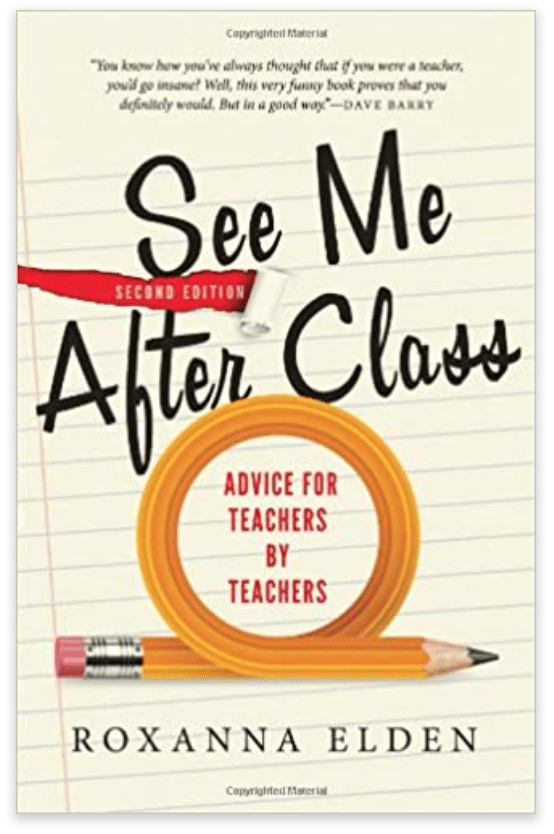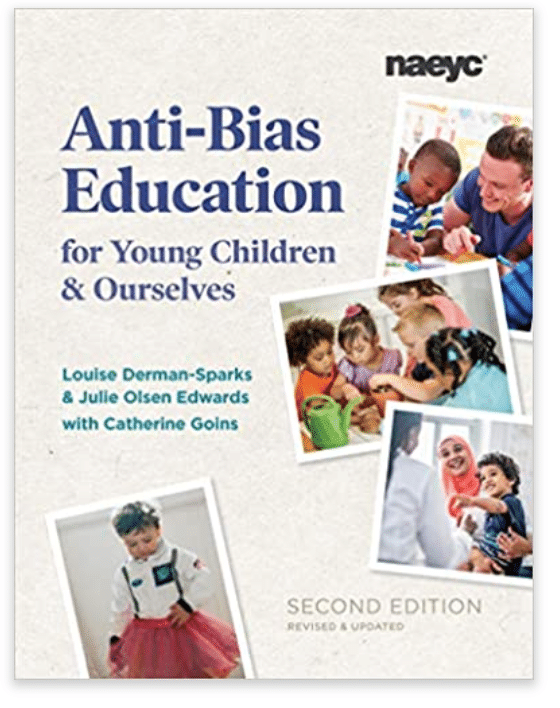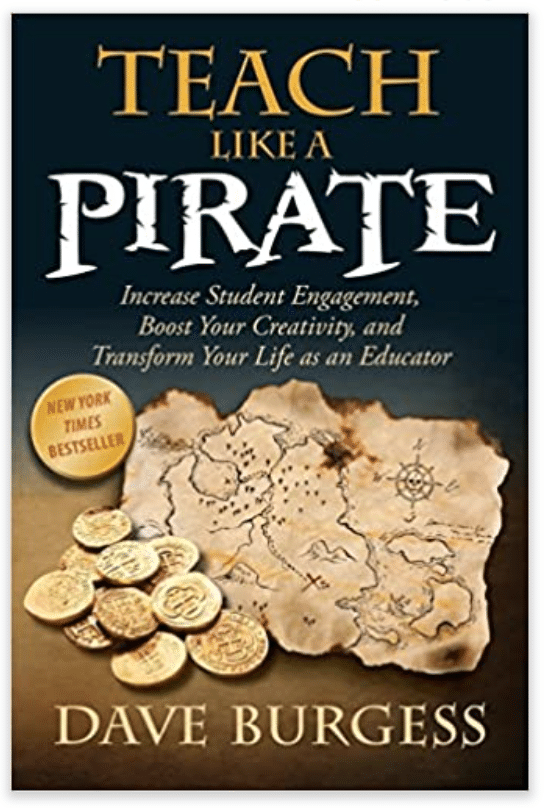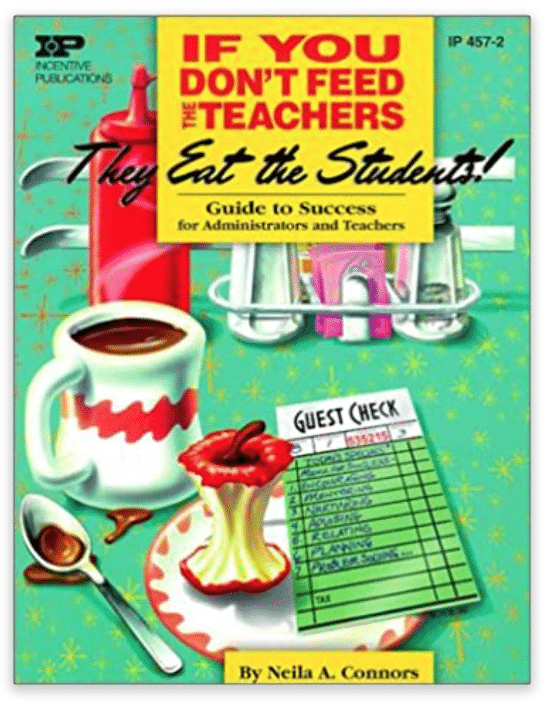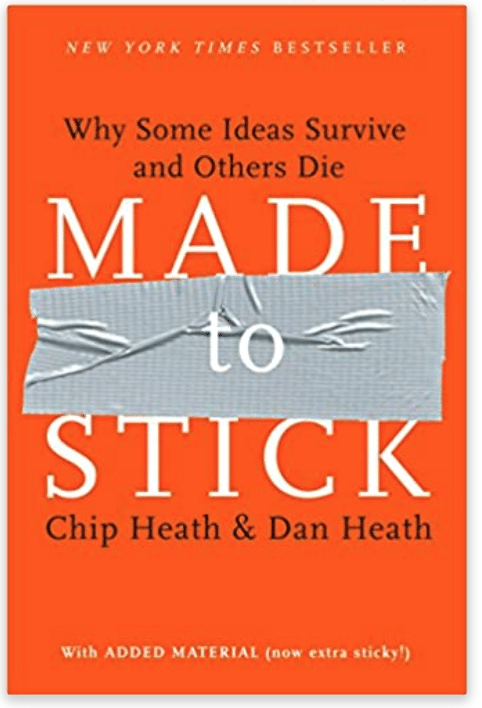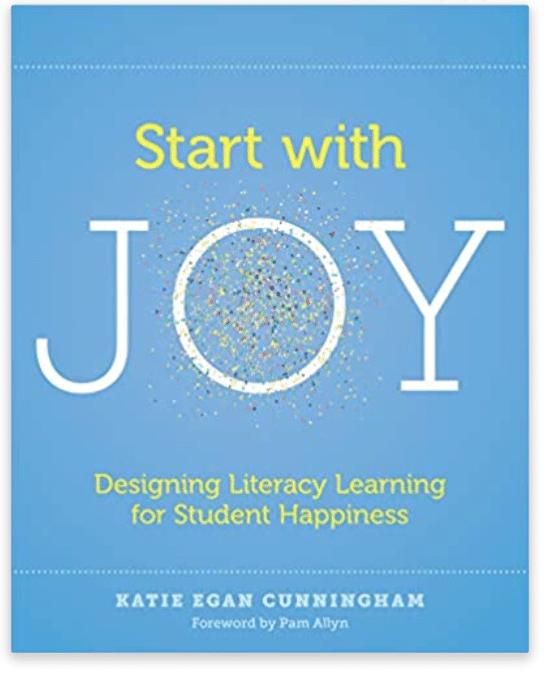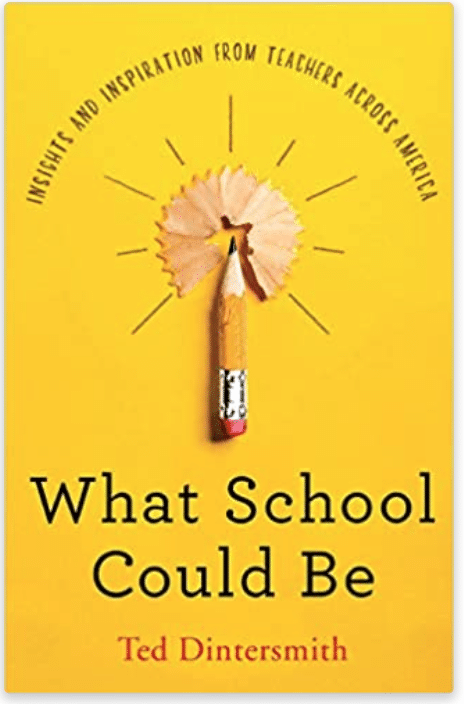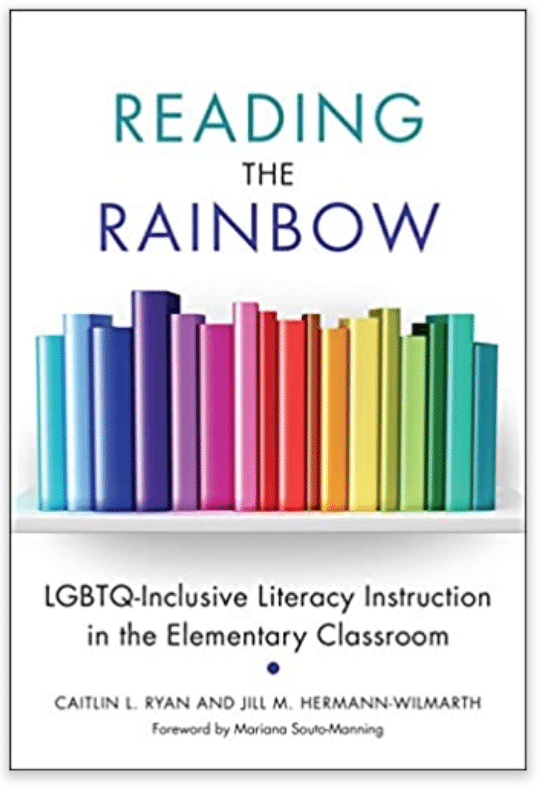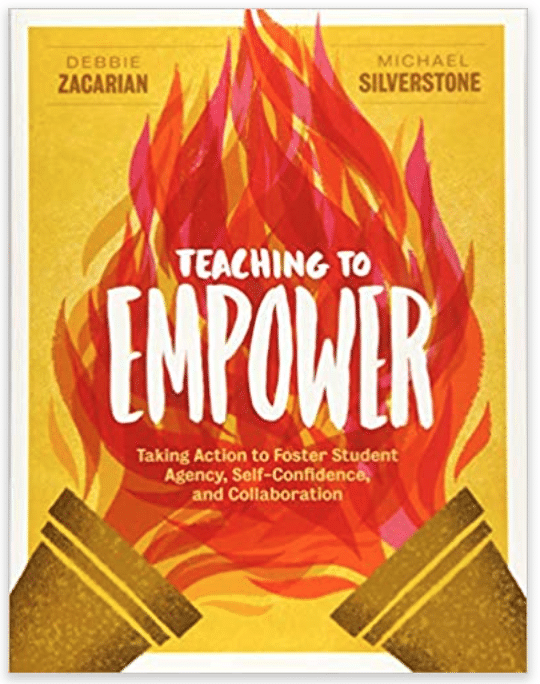As a teacher, at this point you know summer vacation is practically a myth. Between lesson planning, reviewing curriculum, PD seminars, virtual meetings, etc. it can be hard to find time to relax. Even on the few days you aren’t planning and dealing with the uncertainty of the year ahead due to COVID-19, the thought of school is probably still on your mind.
Starting a (mostly) PD summer reading list is the best of both worlds, you can sit back and relax with a book, while still working on and developing your skills – whether you find yourself back in a classroom or teaching virtually in the fall.
Here are some books that should definitely be on your reading list this summer.
1. “I Wish My Teacher Knew: How One Question Can Change Everything for Our Kids”
One day, third-grade teacher Kyle Schwartz asked her students to fill-in-the-blank in this sentence: “I wish my teacher knew _____.” The results astounded her. Some answers were humorous, others were heartbreaking-all were profoundly moving and enlightening. The results opened her eyes to the need for educators to understand the unique realities their students face in order to create an open, safe, and supportive place in the classroom. When Schwartz shared her experience online, #IWishMyTeacherKnew became an immediate worldwide viral phenomenon. Schwartz’s book tells the story of #IWishMyTeacherKnew, including many students’ emotional and insightful responses, and ultimately provides an invaluable guide for teachers, parents, and communities.
2. “Educated: A Memoir”
An unforgettable memoir about a young girl who kept out of school, leaves her survivalist family and goes on to earn a Ph.D. from Cambridge University. Born to survivalists in the mountains of Idaho, Tara Westover was seventeen the first time she set foot in a classroom. Her family was so isolated from mainstream society that there was no one to ensure the children received an education and no one to intervene when one of Tara’s older brothers became violent. When another brother got himself into college, Tara decided to try a new kind of life. Her quest for knowledge transformed her, taking her over oceans and across continents, to Harvard and to Cambridge University. Only then would she wonder if she’d traveled too far if there was still a way home.
3. “The Behavior Code: A Practical Guide to Understanding and Teaching the Most Challenging Students”
Based on a collaboration dating back nearly a decade, the authors of The Behavior Code–a behavioral analyst and a child psychiatrist–reveal their systematic approach for deciphering causes and patterns of difficult student behaviors and matching them with proven strategies that get students back on track academically. This book includes user-friendly worksheets and other helpful resources for applying the authors’ approach. Teaching is an art, but it’s one that can be improved with science. Based on what we have learned in the field of psychology, The Behavior Code gives teachers the tools to transform the behavior patterns of some of their most challenging students. By using this essential book, teachers–instead of punishing or writing off troubled students–can get them onto a path for success.
4. “See Me After Class: Advice for Teachers by Teachers”
Teaching is tough. And teachers, like the rest of the population, aren’t perfect. Yet good teaching happens, and great teachers continue to inspire and educate generations of students. See Me After Class helps those great teachers of the future to survive the classroom long enough to become great. Fueled by hundreds of hilarious–and sometimes shocking–tales from the teachers who lived them, Elden provides tips and strategies that deal head-on with the challenges that aren’t covered in new-teacher training. Lessons can go wrong. Parents may yell at you. Sunday evenings will sometimes be accompanied by the dreaded countdown to Monday morning. As a veteran teacher, Elden offers funny, practical, and honest advice, to help teachers walk through the doors of their classrooms day after day with clarity, confidence…and sanity!
5. “Anti-Bias Education for Young Children and Ourselves”
Becoming a skilled anti-bias teacher is a journey. With this volume’s practical guidance, you’ll grow in your ability to identify, confront, and eliminate barriers of prejudice, misinformation, and bias about specific aspects of personal and social identity. Most important, you’ll find tips for helping staff and children learn to respect each other, themselves, and all people. Over the last three decades, educators across the nation and around the world have gained a wealth of knowledge and experience in anti-bias work. The result is a richer and more nuanced articulation of what is important in anti-bias education. Revolving around four core goals―identity, diversity, justice, and activism―individual chapters focus on culture and language, racial identity, family structures, gender identity, economic class, different abilities, and more.
6. “Teach Like a Pirate: Increase Student Engagement, Boost Your Creativity, and Transform Your Life as an Educator”
Based on Dave Burgess’s popular “Outrageous Teaching” and “Teach Like a PIRATE” seminars, this book offers inspiration, practical techniques, and innovative ideas that will help you to increase student engagement, boost your creativity, and transform your life as an educator. You’ll learn how to: -Tap into and dramatically increase your passion as a teacher -Develop outrageously engaging lessons that draw students in like a magnet -Establish rapport and a sense of camaraderie in your classroom -Transform your class into a life-changing experience for your students This groundbreaking inspirational manifesto contains over 30 hooks specially designed to captivate your class and 170 brainstorming questions that will skyrocket your creativity. Once you learn the Teach Like a PIRATE system, you’ll never look at your role as an educator the same again.
7. “If You Don’t Feed the Teachers They Eat the Students: Guide to Success for Administrators and Teachers”
Packed with words of wisdom and inspiration, this is one book no administrator or teacher should be without. Dr. Neila Connors presents practical tips to improve school climate, communicate with parents and students, teach to the standards, and make a difference in students’ lives. All this in an enjoyable, easy-to-read format, If You Don’t Feed the Teachers They Eat the Students will leave you laughing your way to a more successful school year.
8. “Made to Stick: Why Some Ideas Survive and Others Die”
In Made to Stick, Chip and Dan Heath reveal the anatomy of ideas that stick and explain ways to make ideas stickier, such as applying the human scale principle, using the Velcro Theory of Memory, and creating curiosity gaps. Along the way, we discover that sticky messages of all kinds—from the infamous “kidney theft ring” hoax to a coach’s lessons on sportsmanship to a vision for a new product at Sony—draw their power from the same six traits. Made to Stick will transform the way you communicate. It’s a fast-paced tour of success stories (and failures): the Nobel Prize-winning scientist who drank a glass of bacteria to prove a point about stomach ulcers; the charities who make use of the Mother Teresa Effect; the elementary-school teacher whose simulation actually prevented racial prejudice. Provocative, eye-opening, and often surprisingly funny, Made to Stick shows us the vital principles of winning ideas—and tells us how we can apply these rules to making our own messages stick.
9. “Start With Joy: Designing Literacy Learning for Student Happiness”
Start with Joy: Designing Literacy Learning for Student Happiness links what we know from the science of happiness with what we know about effective literacy instruction. By examining characters in the books they read, children develop empathy for others and come to understand that we all struggle, and we all love. When given a choice about what to write, children express hopes, fears, and reactions to life’s experiences. Literacy learning is full of opportunities for students to learn tools to live a happy life. This book honors the adventure that learning is meant to be. By infusing school days with happiness, teachers can support children as they become stronger readers, writers, and thinkers, while also helping them learn that strength comes from challenge, and joy comes from leading a purposeful life.
10. “Biased: Uncovering the Hidden Prejudice That Shapes What We See, Think, and Do”
How do we talk about bias? How do we address racial and gender disparities and inequities? What role do our institutions play in creating, maintaining, and magnifying those inequities? What role do we play? With a perspective that is at once scientific, investigative, and informed by personal experience, Dr. Jennifer Eberhardt offers us the language and courage we need to face one of the biggest and most troubling issues of our time. She exposes bias at all levels of society—in our neighborhoods, schools, and workplaces. Yet she also offers us tools to address it. Eberhardt shows us how we can be vulnerable to bias but not doomed to live under its grip.
11. “What School Could Be: Insights and Inspiration from Teachers Across America”
During the 2016 school year, innovation expert Ted Dintersmith took an unprecedented trip across America. He visited all fifty states, seeking to raise awareness about the urgent need to reimagine education to prepare students for the career and citizenship demands of an increasingly-innovative world. As he traveled, though, Dintersmith met innovative teachers all across the country — teachers doing extraordinary things in ordinary settings, creating innovative classrooms where children learn deeply and joyously. Each day, these students are engaged and inspired by their teachers, who in turn help children develop purpose, agency, essential skillsets and mindsets, and deep knowledge. The insights of these teachers offer a vision of what school could be, and a model for how to help schools achieve it.
12. “Reading the Rainbow: LQBTQ- Inclusive Literacy Instruction in the Elementary Classroom”
The authors show how expanding the English language arts curriculum to include representations of LGBTQ people and themes will benefit all students, allowing them to participate in a truly inclusive classroom. The text describes three different approaches that address the limitations, pressures, and possibilities that teachers in various contexts face around these topics. The authors make clear what LGBTQ-inclusive literacy teaching can look like in practice, including what teachers might say and how students might respond. “Reading the Rainbow” is designed to be interactive, providing readers with opportunities to consider these new approaches with respect to their own classrooms and traditional literacy instruction.
13. “Teaching to Empower: Taking Action to Foster Student Agency, Self-Confidence, and Collaboration”
We want students to master academic standards, and we want them to be confident, adaptive, and socially responsible. Above all, we want them to find meaning and satisfaction in their lives. Achieving these goals requires a concerted focus on the social-emotional skills that empower students in and beyond the classroom. In Teaching to Empower, Debbie Zacarian and Michael Silverstone explore what an empowered student looks like in our increasingly diverse contemporary schools and prompt educators to examine their own relationship to empowerment. The book’s evidence-based strategies and authentic examples show you how to foster an inclusive culture of agency, self-confidence, inclusion, and collaboration that will give each of your students—regardless of race, culture, language, socioeconomic status, abilities, sexuality, or gender—the opportunity, responsibility, and tools to become an active learner, thoughtful community member, and engaged global citizen.
What are you reading this summer?
This article is furnished by California Casualty, providing auto and home insurance to educators, law enforcement officers, firefighters, and nurses. Get a quote at 1.866.704.8614 or www.calcas.com.
- Graduation – When to Remove Your Child from Your Auto Policy - May 18, 2023
- How to Prevent Catalytic Converter Theft - May 17, 2023
- How Much Does Home Insurance Cost? - May 17, 2023





